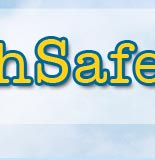Once the problems for prevention/intervention are identified, the team needs to develop action plans to address them. The Problem-Solving Worksheet and Guidelines can assist the team in this endeavor. Critical to this process is the development of hypotheses or informed hunches regarding the causes and contingencies of the identified problems. The team should brainstorm as many possible hypotheses for the existence of the problem as possible. For instance, if student fighting before school has been identified as a problem area, the team might hypothesize that:
• The fights occur due to lack of staff supervision
• The fights occur due to poor behavior management on the incoming busses
• The fights occur due to poor anger management/conflict resolution skills among
the students
• The fights occur due to the presence of outside intruders
Notice that the hypotheses all contain implications for possible intervention. Avoid remote sociological or psychological explanations over which the school has little influence (e.g., “The fights occur due to the influences of poverty” or the “The fights occur because of low self-concepts among the fighters.”)
Following this exercise, the team should agree on one or more action hypotheses for intervention. The action aspect is determined by completion of the following stem:
“If (hypothesis) is true, then (intervention) will result in the desired outcome.”
In the above example, the team might conclude:
“If the fights occur due to lack of staff supervision, then assigning three additional staff members to outside duty before the start of school will result in a reduction of student fighting.” |









